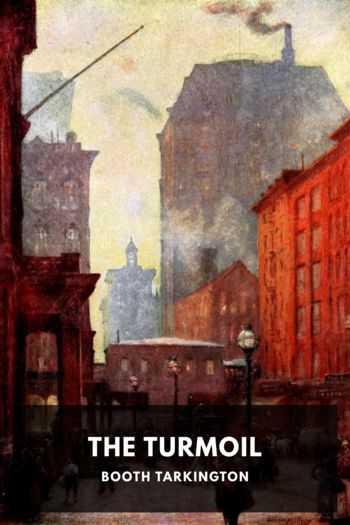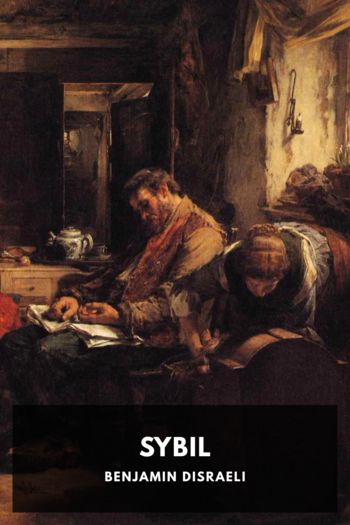Malaysian Maverick: Mahathir Mohamad in Turbulent Times, Barry Wain [best mystery novels of all time .txt] 📗

- Author: Barry Wain
Book online «Malaysian Maverick: Mahathir Mohamad in Turbulent Times, Barry Wain [best mystery novels of all time .txt] 📗». Author Barry Wain
Asia 1982 Yearbook, Far Eastern Economic Review Ltd., p. 194.
In-Won Hwang, Personalized Politics: The Malaysian State Under Mahathir (Singapore: Institute of Southeast Asian Studies, 2003), p. 129.
Harold Crouch, Government & Society in Malaysia (Sydney: Allen & Unwin, 1996), p.38.
R.S. Milne and Diane K. Mauzy, Malaysian Politics Under Mahathir (London: Routledge, 1999), p. 160.
In-Won Hwang, "Malaysia's 'Presidential Premier': Explaining Mahathir's Dominance", in Reflections, p. 68.
Asia 1984 Yearbook, Far Eastern Economic Review Ltd., p. 212.
Interview with Param Cumaraswamy, 3 April 2008.
Ibid.
Stephen Duthie, "Poll Proves Bruising for Malaysian Party", Asian Wall Street Journal, 22 April 1987.
Stephen Duthie, "Mahathir Faces Hard Job on Party Unity", Asian Wall Street Journal, 27 April 1987.
Param Coomaraswamy [sic], "Injustice for All", Far Eastern Economic Review, 9 October 2003, http://www.feer.com/articles/2003/0310_09/p024region.html (accessed 19 January 2006).
Stephen Duthie, "New Detentions Net Malaysia's Chief Dissidents", Asian Wall Street Journal, 29 October 1987.
Harold Crouch, Government & Society in Malaysia, p. 112.
The last to be released, Lim Kit Siang and his son, Lim Guan Eng, spent 18 months in detention.
Stephen Duthie, "New Detentions Net Malaysia's Chief Dissidents".
In-Won Hwang, Personalized Politics, p. 125.
Ibid., p. 126.
Ibid., p. 123.
Asia 1988 Yearbook, Far Eastern Economic Review Ltd., p. 180.
Stephen Duthie, "Mahathir's Rift with Judiciary Worsens", Asian Wall Street Journal, 30 December 1987. Mahathir Mohamad, speech at the Asean Law Association General Assembly, University of Malaya, 26 October 1982.
K. Das, Questionable Conduct (Kuala Lumpur: K. Das, 1990), p. 6.
V.G. Kulkarni, Murray Hiebert and S. Jayasankaran, "Tough Talk: Mahathir Thrives on No-Nonsense Policies", Far Eastern Economic Review, 24 October 1996, p. 23.
R.S. Milne and Diane K. Mauzy, Malaysian Politics Under Mahathir, p. 47.
Alan Friedman and Jonathan Gage, "Malaysia's Currency Controls will be Eased, Mahathir Promises", International Herald Tribune, 30 January 1999, http://www.iht.com/articles/1999/01/30/maha.t.php (accessed 14 December 2006).
Dato Sri George Seah, "If UMNO-11 Appeal Had Been Heard...", Aliran Monthly, 2003: 11, p. 35.
Interview with Mahathir Mohamad, 31 March 2008.
Interview with Param Cumaraswamy, 19 October 2007.
Interview with Anwar Ibrahim, 15 August 2007.
Reflections on the Malaysian Constitution (Penang: Persatuan Aliran Kesedaran Negara, 1987), p. 20.
Parliamentary debates, House of Representatives, Malaysia, 8 December 1992, p. 11311.
Phone interview with Salleh Abas, 24 August 2008.
"Johor Sultan Seeks Forgiveness", Aliran Monthly, 1995: 4, p. 27, an English translation of a report in Harakah, 21 April 1995, p. 32.
Dr. Mahathir Mohamad, "The Tun Salleh Saga", 6 June 2008, http://test.chedet.com/cgi-bin/mt/mt-search.cgi?search=salleh&IncludeBlogs=1 (accessed 28 August 2008).
H.P. Lee, Constitutional Conflicts in Contemporary Malaysia (Kuala Lumpur: Oxford University Press, 1995), p. 60.
Interview with Param Cumaraswamy, 19 October 2007.
Beh Lih Yi, "If I don't Accept, I'll be Sacked", 1 October 2007, http://www.malaysiakini.com/news/73038 (accessed 1 October 2007).
Geoffrey Robertson, "Justice Hangs in the Balance", Observer, 28 August 1988.
Tun Salleh Abas with K. Das, May Day for Justice (Kuala Lumpur: Magnus Books, 1989), p. xx.
George Seah, "Lessons to be Learnt from the 1988 Judicial Crisis", Aliran Monthly, 2004: 8, p. 40.
H.P. Lee, Constitutional Conflicts in Contemporary Malaysia, p. 57.
Param Cumaraswamy, "Judicial Reforms Must Meet the Test of Constitutionality", Sun, 30 December 2008.
Raphael Pura, "Rulings Spark Controversy in Malaysia", Asian Wall Street Journal, 25 August 1995.
Untitled, undated anonymous 33-page document circulated in 1996, which High Court judge Syed Ahmad Idid Syed Abdullah Aidid later admitted writing, p. 1.
Roger Mitton, "Courting Controversy", Asiaweek.com, 26 July 1996, http://www.asiaweek.com/asiaweek/96/0726/nat3.html (accessed 16 February 2006).
H.P. Lee, Constitutional Conflicts in Contemporary Malaysia, p. 127.
Ibid., p. 128.
Dr. Mahathir Mohamad, "The Tun Salleh Saga".
Interview with Mahathir Mohamad, 20 March 2007.
Interview with Mohamed Tawfik Ismail, 23 September 2006. Tawfik is the oldest son of a former deputy prime minister, the late Ismail Abdul Rahman. Dr. Mahathir later denied making the comment. He said Tawfik was dropped because of his "lacklustre performance". Dr. Mahathir Mohamad, "Fitnah", 15 February 2009, http://chedet.co.cc/chedetblog/2009/02/fitnah.html (accessed 20 March 2009).
Gordon P. Means, "Malaysia in 1989: Forging a Plan for the Future", Southeast Asian Affairs 1990, p. 186.
Eddin Khoo and Jason Tan, "Transitional Times", p. 25.
In-Won Hwang, Personalized Politics, pp. 173,203, fn 110.
John Funston, "UMNO: What Legacy Will Mahathir Leave?", in Reflections, p. 135.
Ibid., p. 135.
R.S. Milne and Diane K. Mauzy, Malaysian Politics Under Mahathir, p. 186.
Khoo Boo Teik, "Who Will Succeed the Successor?", Aliran Monthly, 2003: 5, p. 6.
(4)
The Vision of a Modern Nation
Dr. Mahathir wasted no time in transforming Malaysia in line with his vision of a modern, industrialized nation, setting the goal of becoming fully developed by 2020. Once dominant primary commodities, already receding, gave way to the production of manufactured goods and the embrace of a high-tech future. With the economy expanding at an annual average rate of 6.1 per cent for the 22 years he was prime minister,[1] Malaysia was one of the developing world's most successful countries. It was all the more impressive for being a Muslim-majority nation, indicating that Islam could be compatible with representative government and modernization. That it was achieved while a comprehensive affirmative action programme was being applied to such an ethnically diverse population added lustre to Malaysia's internationally acclaimed success.
As the government poured money into highways, airports, skyscrapers, bridges and container ports, Malaysians ditched their bicycles and motorbikes for cars and more cars. With manufacturing growing from about 30 per cent to more than 70 per cent of exports, Malaysia became an economic dynamo and one of the world's top 20 exporters. It even became an exporter of capital, investing in regions as diverse and distant as Eastern Europe, South Africa and China. The World Bank declared Malaysia, along with neighbours Singapore, Thailand and Indonesia, part of East Asia's "economic miracle".[2]
Actually, high growth rates in Malaysia were not new. Throughout the 1970s, the decade before Dr. Mahathir came to power, the country averaged an outstanding 8 per cent a year.[3] Under the tech-savvy and driven Dr. Mahathir, however, it was the transformation of the economy, with its modernizing effects, that was more palpable than the increase in gross domestic product (GDP), and more resonant in the public mind.[4] The expansion of industry, construction and finance changed the face of the economy and society and fuelled what political economist Lee Hwok Aun called "a nationalistic fervour towards the





Comments (0)